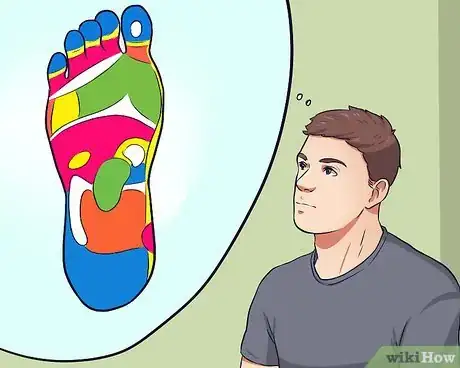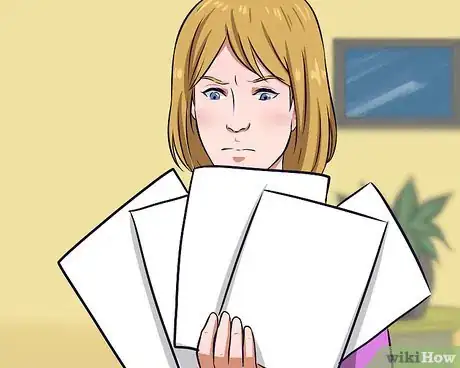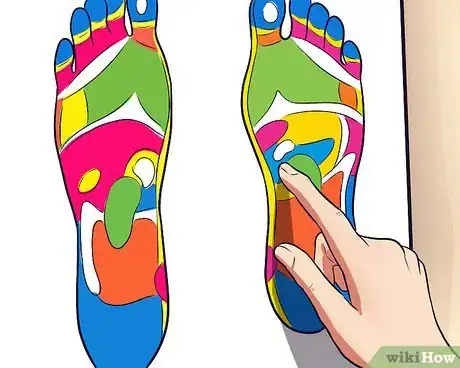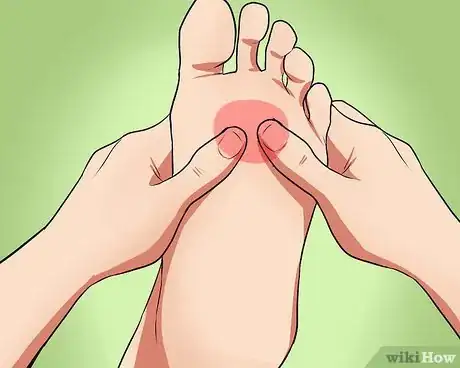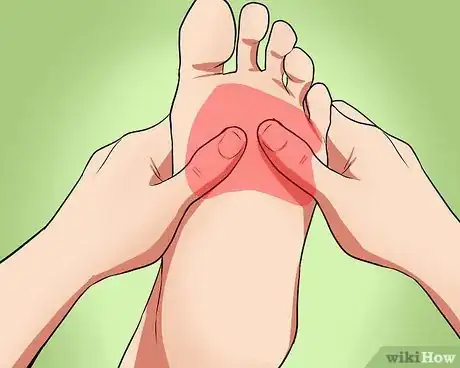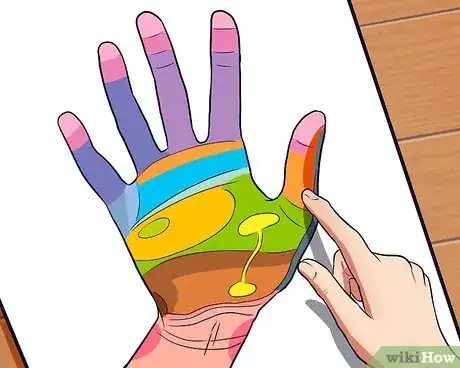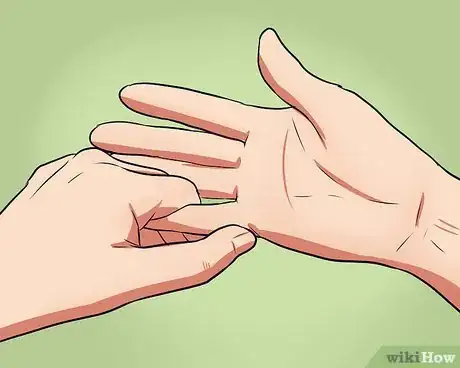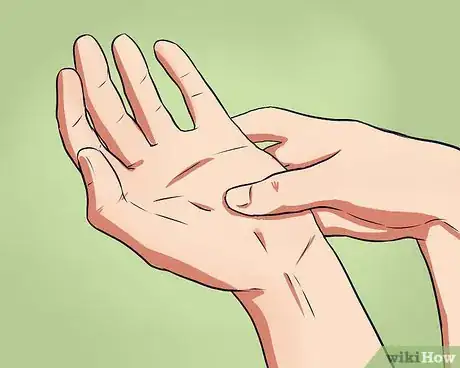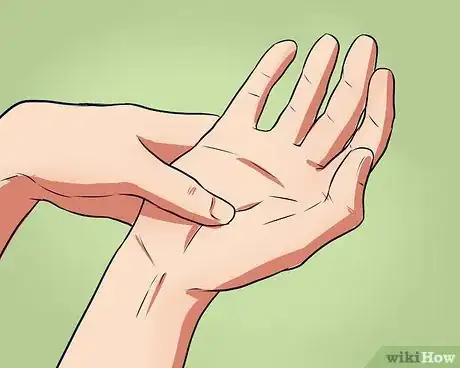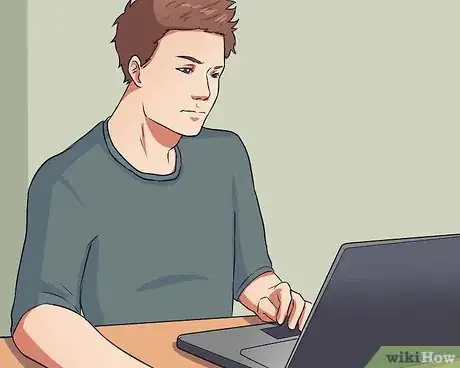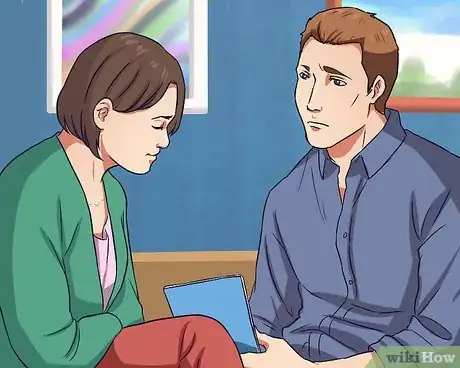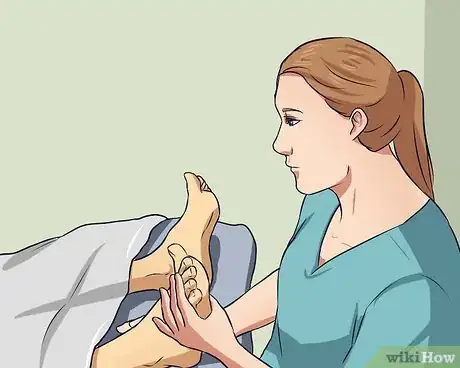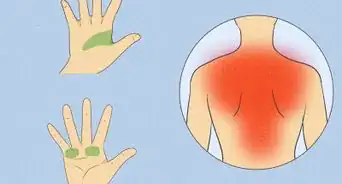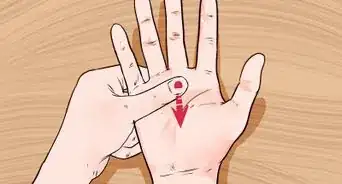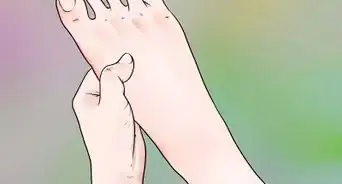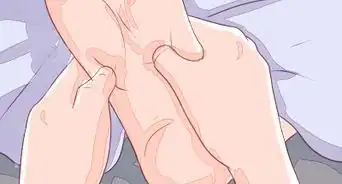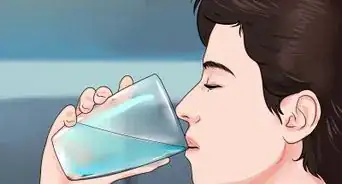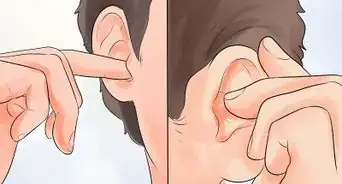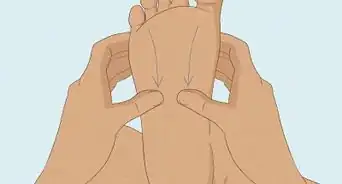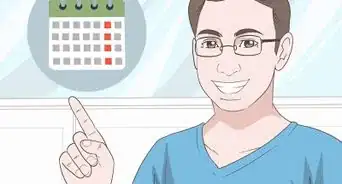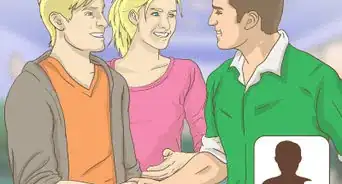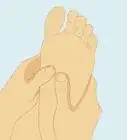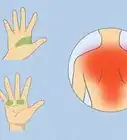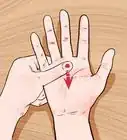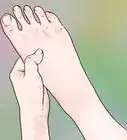This article was co-authored by Karina Klimtchuk, L.Ac., DACM, Dipl. OM. Dr. Karina Klimtchuk is a Licensed Acupuncturist, Diplomate of Oriental Medicine, Faculty Member at Yo San University of Traditional Chinese Medicine, and the Owner of Kai Wellness. She specializes in holistic health, Chinese herbal medicine, and functional medicine. Dr. Klimtchuk also helps patients through emotional and spiritual trauma. She holds a BA in Psychology and Sociology from The University of Massachusetts, Boston, a Master's from Emperor's College in Santa Monica, CA, and a Doctorate of Acupuncture and Chinese Medicine (DACM) from Pacific College of Oriental Medicine.
There are 13 references cited in this article, which can be found at the bottom of the page.
wikiHow marks an article as reader-approved once it receives enough positive feedback. In this case, several readers have written to tell us that this article was helpful to them, earning it our reader-approved status.
This article has been viewed 114,732 times.
Reflexology is a form of therapy that works by applying pressure to certain parts of the body, mainly the feet, hands and ears. Some studies have shown it to be effective in terms of pain reduction, relaxation, and better circulation.[1] [2] Although many will visit with a professional reflexologist, you can apply some techniques yourself.
Steps
Getting Started
-
1Learn about how reflexology is thought to work. The main theory as to how reflexology works was first formulated in the 1890's. The theory states that by applying the techniques of reflexology, signals are sent along the nervous system which results in the body lowering the overall level of tension. This lowering of tension increases circulation and well-being.[3]
- An additional theory states that by relieving stress, any pain caused by that stress is also reduced.
- One final theory states the body contains "energetic" circuits, which can be blocked by stress. Reflexology helps to remove these blockages and keep your "vital energy" flowing.
- Reflexology uses a microsystem like the bottom of the foot.[4]
- You can apply pressure to different body parts and stimulate a response in another part of the body.[5]
- There are charts to guide you in applying pressure.[6]
-
2Find a good reflexology chart. These charts will give you a map of which areas of the body correspond to other areas of the body. Many charts are color coded and make it easy for you to find the areas that can help improve circulation.[7]
- Good charts will display the areas being worked on from a few different angles. This can make it easier to determine the specific areas of the foot you may want to target.
- Get a chart that has adequate labeling. You won't want a chart that has too little or too much information. Find a chart that you feel you can understand easily.
- Charts will either label areas directly, using descriptive terms, or use a numbering or symbolic system. If the chart uses a numbering or symbolic system, make sure they come with a legend or key.
- Your chart should have some basic information on how to apply simple reflexology techniques.
- To learn more information on reflexology, you may want to purchase a more in depth book or take some classes.
- Speak with a reflexologist to learn which charts and books they recommend.
Advertisement -
3Read your chart. Find the corresponding reflexes for circulatory and cardiovascular on the chart. Any areas dealing with the chest or heart will be the main reflex points you will be working with.[8]
- Your chart should have basic information on which points to target for cardiovascular issues.
- If your chart uses a numerical system, find the area of the foot that corresponds with those numbers.
- Some charts will have areas that deal with circulation, but recommend targeting organs such as lungs, parathyroid glands, adrenal glands, kidneys, ureters, and bladder.
-
4Learn how to thumb-walk. Thumb-walking is a technique that you will be using to put pressure on the areas of your foot that are specified by reflexology to increase circulation. It also allows you to work for a longer period of time without straining your hand or thumb.
- Thumb-walking is as easy as bending and straightening your thumb.
- You will be using the inside edge of the tip of your thumb to apply pressure.
- Lay your thumb flat on the surface of the foot, or any surface for practice.
- Bend your thumb. You whole hand should move up slightly when you bend your thumb. Think of a caterpillar crawling.
- Straighten your thumb out. Keep your hand in place while only your thumb moves forward.
- Apply pressure in between the bending and unbending of your thumb.
- You can also do this with your fingers as well. Use the same motion with your index finger, bending and straightening it, as you slowly work the area.
Using Reflexology Foot Techniques
-
1Find a relaxing and clean space to work in. Reflexology can be carried out anywhere; however, creating a peaceful and clean setting will help obtain better results.[9]
- Peaceful surroundings can help you relax and get the most out of your session.
- Keep lighting low and make sure the temperature is comfortable.
- Consider gentle music or even silence. Both can help bring about relaxation.
- Wash your hands and trim your fingernails. Remove any jewelry from your hands.
-
2Prepare your hands and feet. Remove any socks or shoes. Make sure the feet are clean and free from any wounds or obvious injuries. Wash both hands and feet before you begin.[10]
- Make sure your fingernails are trimmed and have no sharp edges.
- If the feet are injured in any way, do not apply reflexology techniques to them. Look for any cuts, rashes, or warts before continuing.
-
3Check your chart for numbers or symbols mapped on the foot. Take out your reflexology chart which maps areas of the foot you will be working with. While you can work with the entire foot, there are some spots that are believed to best target the heart and circulation.
- If your chart uses numerical or symbolic references, learn which numbers and symbols correspond to which areas of the feet.
- Find the areas that are labeled or correspond to the heart, circulation, and the lungs.
- Keep your chart in a place that makes it easy to reference once you begin working.
-
4Target your heart reflex point. Press the heart reflex point on your left foot using both of your thumbs. This reflex point is quite large, so walk your thumbs all over the area in a clockwise direction.
- Targeting the heart reflex area is believed to reduce any stress in that area and result in better circulation.[11]
- Use the "thumb walking" technique. Lay your thumb flat, then bend it, bringing your hand up with the bend. Lay your thumb flat again and keep your hand still.
- You can also use the "finger walking" technique. This is the same idea as the thumb-walking, however, you use your index finger. This is mainly used on the top of the foot.
- Apply pressure only for a few seconds as you move along the heart reflex area.[12]
- If you forget exactly where the heart reflex point is, check your reflexology chart.
-
5Target the lung reflex point. Apply pressure to your lung reflex point on your left foot. This reflex area is even larger than your heart reflex area.
- The lung reflex point surrounds your heart reflex point.
- Apply gentle pressure for a few seconds as your work the entire area.
- Use both of your thumbs to press and release the entire lung reflex point.
- You can also use your knuckles to apply pressure.
- By working with the lung reflex point, it is believed that any tension in that area will be reduced. This will result in better breathing and increased circulation.
Using Reflexology Hand Techniques
-
1Find a relaxing and soothing environment. You don’t need to buy any special equipment for a hand reflexology treatment. Just as with foot treatments, peaceful surroundings can help you relax and get the most out of your session.[13]
- If working on another person, have them lie or sit down comfortably.[14]
- Hand treatments can be applied anywhere; however, the ideal is a calm and secure environment.
- Wash your hands and trim your fingernails. Anyone involved should remove any jewelry from their hands as well.
-
2Check your chart for numbers or symbols mapped on the hand. Look at your reflexology chart and find the locations associated circulatory system. Look over your hands, or the hands of the person being worked on, to find these locations indicated by the chart.
- Your chart may have numbers or symbols mapped on the foot. If this is the case, learn which numbers or symbols correspond to circulation.
- There may be other areas the chart recommend working with for circulation, such as lungs or kidneys.
- Targeting these area is believed to reduce any stress in that area and result in better circulation.[15]
-
3Apply pressure to your fingers. Your fingers are thought to correspond with anything above your neck, such as brain, skull, hearing and sight. Start working on the top, backside, of your left thumb. Gently apply steady pressure for a few moments, before moving slightly down your thumb. Work your way down the entire length of your thumb.
- Use your opposite thumb to push into these points. Push firmly and move your thumb in a very small circle.
- Apply pressure for about three to five seconds.
- When finished with your thumb, move on to your index finger. Start at the top again and work your way down, applying pressure with your thumb as you go.
- Continue to do this to all of your fingers.
- By applying these techniques to your hand, it is believed that tension will be reduced in the body. This tension reduction will improve circulation.[16]
-
4Start applying pressure to your palm. Your palm is thought to have reflex connections with your torso and the organs within it. Place your hand on a flat surface, palms facing up. Apply pointed pressure with your thumb to the pads just under your fingers. Move down, up, and across each pad.
- After you are done with the pads below your fingers, move onto the palm of your hand.
- Once finished with the palm of the hand, keep moving down, up and across, this time on the outside edge of your hand.
- Now, work from the base of the thumb to the outside edge of the hand. This will cover a large area of your hand and the many corresponding areas of the body.
- Finally end by applying gentle pressure to the wrist, right to left, then left to right.
-
5Work the opposite hand. Follow the same steps to target all the points of your opposite hand. By working with both hands it is believed that a balanced and optimal effect will be achieved.
Finding a Trained Reflexologist
-
1Research reflexologists in your area. Similar to selecting a good doctor or mechanic, you will want to look at their practice closely. Investigating potential reflexologists will help to ensure that your treatments are of the best quality and that your money is well spent.[17]
- Seek out referrals. Try talking to your doctor and see if they can refer you to any reflexologists in your area. You may also want to check with family and friends who have visited any reflexologists in the area to get their opinion.
- Look for professional organizations and their affiliated reflexologists. Research organizations such as the American Reflexology Certification Board, the Reflexology Association of America, and Professional Reflexology Association.[18]
- Look into any training or certification your reflexologist might have. Ask your reflexologist about the training they may have received and any certificates or accreditation they may have earned. There are national standards for accreditation, which should have included around 110 hours of instruction. [19]
-
2Discuss any preexisting conditions. There are some medical issues and conditions that can prevent reflexology from being an option. Alert your reflexologist about any of the following conditions, as they may prevent you from receiving treatments:
- Do not get reflexology at all if you have any of these conditions:
- Deep vein thrombosis
- Thrombophlebitis
- Cellulite on the feet or legs
- Acute infection with high temperature
- Stroke- in the first two weeks
- An unstable pregnancy
- Only a properly trained reflexologist should work with you if you have any of the following conditions:
- Pregnancy in the first trimester
- Insulin dependent diabetes
- Cancer
- Epilepsy
- Anti-coagulating drugs
- People taking high dosage drugs or a variety of drugs
- Having had recent heart surgery, within 6 months.
- Contagious conditions such as plantar warts, AIDS, Hep B or C
- Do not get reflexology at all if you have any of these conditions:
-
3Be prepared for multiple appointments. Reflexology works best when used regularly. A single appointment be helpful, however, it seems the results of reflexology are cumulative in nature. [20]
- It is recommend that you begin with one session every week for six to eight weeks.
- Treating a specific illness may require a higher frequency of treatments.
- Don't use reflexology exclusively. Although it may help in some ways, combine its techniques with other treatments your primary doctor may have recommended.
Warnings
- Always alert your reflexologist about any medical conditions you have.⧼thumbs_response⧽
- When administering reflexology, use firm pressure, but never be forceful.⧼thumbs_response⧽
- Never receive reflexology on a wounded body part. Any cuts, rashes, or bruised areas should be avoided.⧼thumbs_response⧽
References
- ↑ http://www.ncbi.nlm.nih.gov/pmc/articles/PMC3576031/
- ↑ http://www.takingcharge.csh.umn.edu/explore-healing-practices/reflexology/what-does-research-say-about-refloxology
- ↑ http://www.takingcharge.csh.umn.edu/explore-healing-practices/reflexology/how-does-reflexology-work
- ↑ Karina Klimtchuk, L.Ac., DACM, Dipl. OM. Licensed Acupuncturist & Diplomate of Oriental Medicine. Expert Interview. 25 August 2021.
- ↑ Karina Klimtchuk, L.Ac., DACM, Dipl. OM. Licensed Acupuncturist & Diplomate of Oriental Medicine. Expert Interview. 25 August 2021.
- ↑ Karina Klimtchuk, L.Ac., DACM, Dipl. OM. Licensed Acupuncturist & Diplomate of Oriental Medicine. Expert Interview. 25 August 2021.
- ↑ http://www.massagetherapy101.com/massage-equipment/reflexology-foot-charts.aspx
- ↑ http://ofesite.com/health/reflex/remedy/
- ↑ http://career.iresearchnet.com/career-information/reflexologist-career/
- ↑ http://www.takingcharge.csh.umn.edu/explore-healing-practices/reflexology/what-can-i-expect-first-reflexology-visit
- ↑ http://www.takingcharge.csh.umn.edu/explore-healing-practices/reflexology/what-can-i-expect-first-reflexology-visit
- ↑ https://www.youtube.com/watch?v=uUhU1T1x45o
- ↑ https://www.sciencedirect.com/science/article/pii/S2225411015000905
- ↑ http://www.takingcharge.csh.umn.edu/explore-healing-practices/reflexology/what-can-i-expect-first-reflexology-visit
- ↑ http://www.takingcharge.csh.umn.edu/explore-healing-practices/reflexology/what-can-i-expect-first-reflexology-visit
- ↑ http://www.takingcharge.csh.umn.edu/explore-healing-practices/reflexology/how-does-reflexology-work
- ↑ http://www.takingcharge.csh.umn.edu/explore-healing-practices/reflexology/how-can-i-find-reflexology-therapist
- ↑ http://www.takingcharge.csh.umn.edu/explore-healing-practices/reflexology/how-can-i-find-reflexology-therapist
- ↑ http://www.takingcharge.csh.umn.edu/explore-healing-practices/reflexology/-reflexology-regulated
- ↑ http://www.takingcharge.csh.umn.edu/explore-healing-practices/reflexology/what-can-i-expect-first-reflexology-visit
